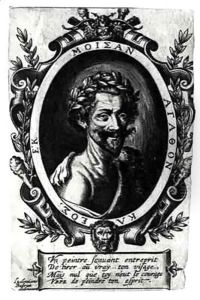Louis Beaubrun Paintings
Louis Beaubrun, often referred to as Louis Beaubrun the elder to distinguish him from his descendants who were also painters, was a French artist born in the first half of the 17th century. Details about his early life, including his exact birth year, are not well-documented, but he was part of a dynasty of painters originating from the town of Beaune in Burgundy, France. The Beaubrun family became associated with portrait painting for the French court.
Louis Beaubrun worked significantly with his cousin Charles Beaubrun (1604-1692), and together they became known for their portraits of the French nobility. Their collaboration was so intertwined that their individual contributions to their joint works are often indistinguishable. They were particularly favored during the reign of King Louis XIV. The Beaubruns' successful partnership was also due to their connection with the court painter Henri Beaubrun, who was Louis's uncle and Charles's father.
The Beaubruns became the unofficial court painters, creating portraits of various members of the royal family and the aristocracy. Their style was characterized by a certain elegance and attention to detail that was typical of French Baroque portraiture. They were known for their ability to depict luxurious fabrics and jewelry with great skill, which appealed to the tastes of their wealthy clientele.
Louis Beaubrun died in the 1670s. His legacy, however, continued through his family, as the Beaubrun studio was taken over by his descendants. His son Henri Beaubrun the younger and his nephew Charles-Antoine Beaubrun continued the family tradition, maintaining the prominence of the Beaubrun name in French art history well into the next century.
